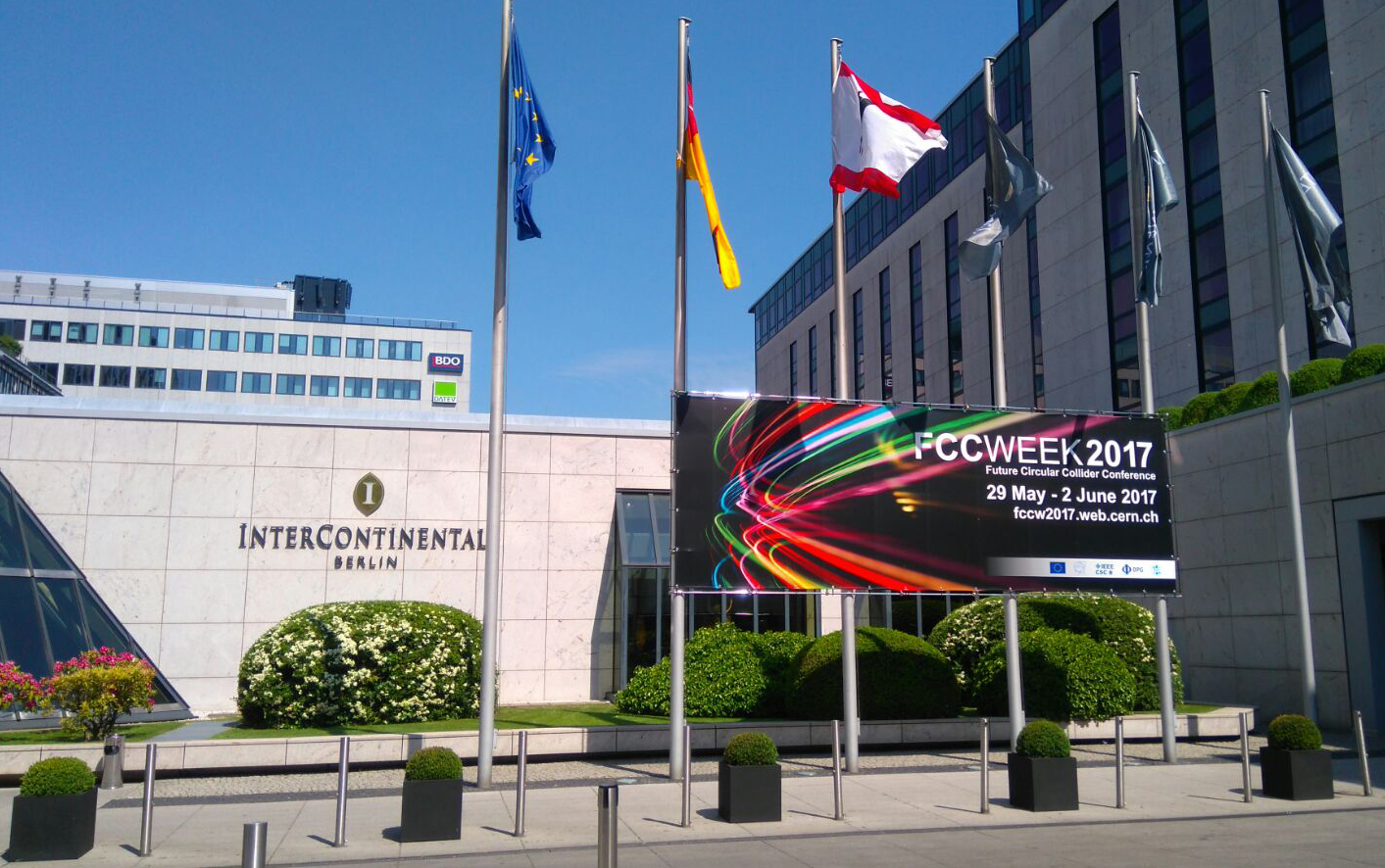Status of EuroCirCol reviewed at FCC Week

Last week the Future Circular Collider (FCC) Study held its annual meeting in Berlin attracting more than 500 participants.
The University of Liverpool is a key partner in FCC. The head of the Quasar group, Prof. Carsten Welsch, is the communications coordinator of EuroCirCol, the EC-funded project that supports the research into the hadron-hadron scenario of the FCC.
The leader of the FCC study and EuroCirCol coordinator, Dr. Michael Benedikt gave an overview of the status of the project, highlighting its major developments since the last gathering in April 2016.
The hadron-hadron collider (FCC-hh) with its 100 TeV centre-of-mass collision energy and 16 Tesla magnets defines the main structure of the 100 km long tunnel of the FCC.
The layout of the collider has been refined to include two high-luminosity experiments, two experiments combined with injection, two collimation insertions, one extraction insertion and a clean insertion with RF. This new layout defines an overall tunnel length of 97.75 km and is compatible with either LHC or SPS as injectors.
One of the most critical elements of FCC-hh is the cryogenic beam vacuum system. Operating at about 50 K it must be able to absorb some 5 MW of synchrotron radiation, while providing an ultrahigh vacuum, supressing the electron cloud effect, etc. A prototype of the beam screen has been produced and it is schedule to undergo its first radiation tests at ANKA synchrotron in early June, signalling a major milestone in the development of the FCC technology.
The 16 Tesla magnets are one of the most challenging aspects of the FCC-hh. The magnet development program has been estimated to take about 20 years. Over the last year a new design strategy has been adopted to develop a single 16 T magnet, compatible with the requirements of both the FCC-hh and its intermediate step, the High-Energy LHC, with an external diameter reduced to about 1200 mm to optimize its cost.
Michael Benedikt also presented a new reference design for the FCC-hh detector which significantly reduces its cost, the basic layout of the tunnel cross section, following the LHC concept, and a new optimized footprint baseline. The new tunnel implementation plan has been optimized in view of the accessibility to surface points, rock type, and shaft depth. Lying at 30 meters below the Geneva lakebed, the new design reduces the shaft length and technical installations.
The main objective of EuroCirCol is to produce a Conceptual Design Report by the end of 2018. Michael Benedikt’s report showed that all of EuroCirCol work packages are well on track to achieve this goal.